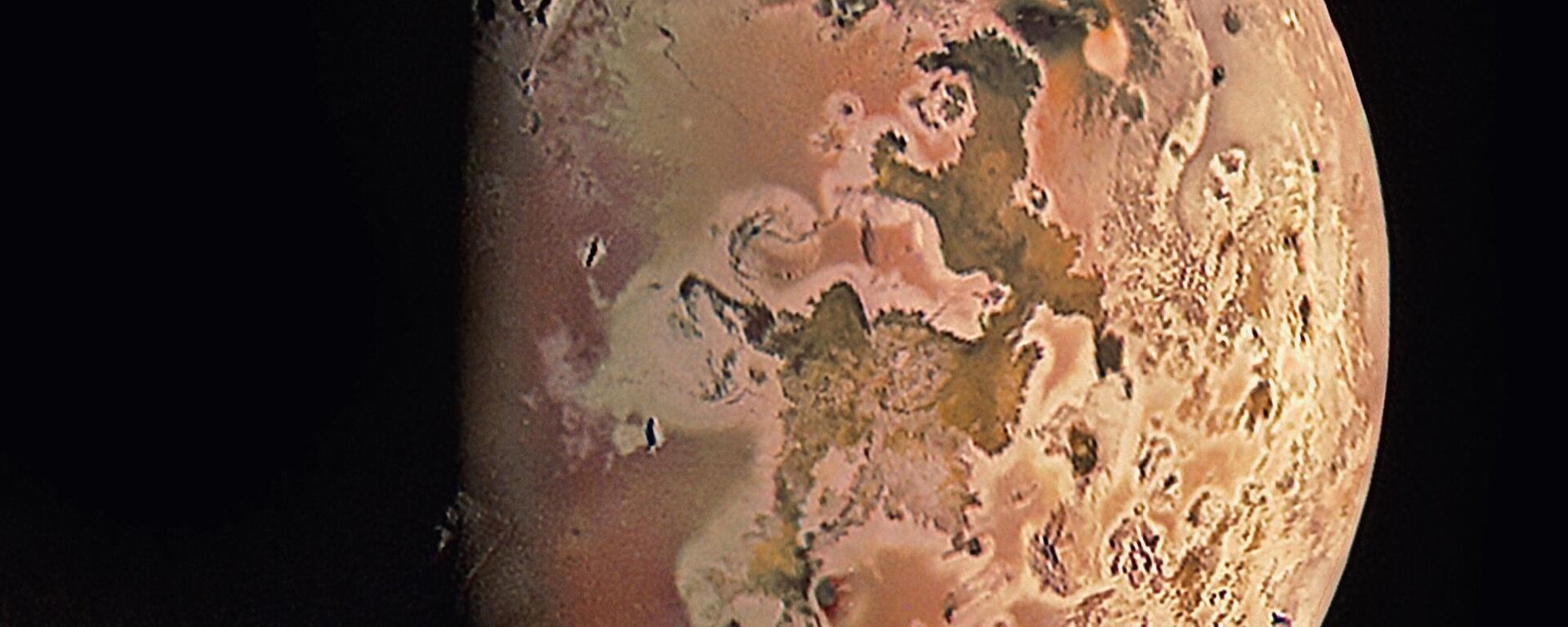https://sputnikglobe.com/20231103/salts-organic-compounds-discovered-on-jupiters-ocean-moon-ganymede-1114703599.html
Salts, Organic Compounds Discovered on Jupiter’s Ocean Moon Ganymede
Salts, Organic Compounds Discovered on Jupiter’s Ocean Moon Ganymede
Sputnik International
The discovery on Ganymede was made while examining data gathered by Juno’s Jovian InfraRed Auroral Mapper (JIRAM) spectrometer, a device used to study the chemistry of the atmospheres of Jupiter and several of its moons.
2023-11-03T21:11+0000
2023-11-03T21:11+0000
2023-11-03T21:10+0000
beyond politics
ganymede
jupiter
juno
astronomy
nasa
organic chemistry
https://cdn1.img.sputnikglobe.com/img/101943/03/1019430391_0:0:1680:946_1920x0_80_0_0_d3211d78eb38d9850263f394ccaec7f6.jpg
The discovery was made while examining data gathered by Juno’s Jovian InfraRed Auroral Mapper (JIRAM) spectrometer, a device used to study the chemistry of the atmospheres of Jupiter and several of its moons. A paper printed earlier this week in Nature Astronomy described the find.Juno’s JIRAM spotted salts such as hydrated sodium chloride, ammonium chloride, sodium bicarbonate, and possibly organic compounds called aliphatic aldehydes, which the National Institutes of Health (NIH) describes as “essential building blocks for the synthesis of more complex organic compounds.”“The composition and spatial distribution of these salts and organics suggest that their origin is endogenic, resulting from the extrusion of subsurface brines, whose chemistry reflects the water–rock interaction inside Ganymede,” the paper said.Today, Ganymede’s vast ocean can only be found beneath its ice surface, as the huge moon has almost no atmosphere. However, water still spews up into the skies over Ganymede through huge geysers, which Juno also observed during the 2021 flyby.
https://sputnikglobe.com/20231018/nasa-captures-jaw-dropping-image-of-jupiters-fire--ice-moon-io-1114275566.html
ganymede
jupiter
Sputnik International
feedback@sputniknews.com
+74956456601
MIA „Rossiya Segodnya“
2023
News
en_EN
Sputnik International
feedback@sputniknews.com
+74956456601
MIA „Rossiya Segodnya“
Sputnik International
feedback@sputniknews.com
+74956456601
MIA „Rossiya Segodnya“
ganymede, juno’s jovian infrared auroral mapper,
ganymede, juno’s jovian infrared auroral mapper,
Salts, Organic Compounds Discovered on Jupiter’s Ocean Moon Ganymede
When NASA’s Juno probe flew past Jupiter’s moon Ganymede in June 2021, it detected several chemicals necessary for life to exist. The massive moon has a vast subterranean ocean that might hold more water than all of Earth’s oceans combined.
The discovery was made while examining data gathered by Juno’s Jovian InfraRed Auroral Mapper (JIRAM) spectrometer, a device used to study the chemistry of the atmospheres of Jupiter and several of its moons. A paper
printed earlier this week in Nature Astronomy described the find.
Juno’s JIRAM spotted salts such as hydrated sodium chloride, ammonium chloride, sodium bicarbonate, and possibly organic compounds called aliphatic aldehydes, which the National Institutes of Health
(NIH) describes as “essential building blocks for the synthesis of more complex organic compounds.”

18 October 2023, 03:50 GMT
“The composition and spatial distribution of these salts and organics suggest that their origin is endogenic, resulting from the extrusion of subsurface brines, whose chemistry reflects the water–rock interaction inside Ganymede,” the paper said.
"We found the greatest abundance of salts and organics in the dark and bright terrains at latitudes protected by the magnetic field," said Scott Bolton of the Southwest Research Institute, who is Juno's principal investigator and one of the paper’s co-authors. "This suggests we are seeing the remnants of a deep ocean brine that reached the surface of this frozen world."
Today, Ganymede’s vast ocean can only be found beneath its ice surface, as the huge moon has almost no atmosphere. However, water still spews up into the skies over Ganymede through huge geysers, which Juno
also observed during the 2021 flyby.
Ganymede is the largest moon in the solar system and is even bigger than the planet Mercury; it is about two-fifths the size of the Earth. It is one of the four Jovian moons discovered by Italian astronomer Galileo Galilei, using one of the first telescopes, in 1610 CE.
Due to its huge amount of liquid water, Ganymede is seen as one of the best candidates in the solar system for being a potential harbor for life. Others include several of Jupiter's other moons, including Europa and Callisto, and Saturn's moons Titan and Enceladus, and the planet Mars and dwarf planet Pluto.



